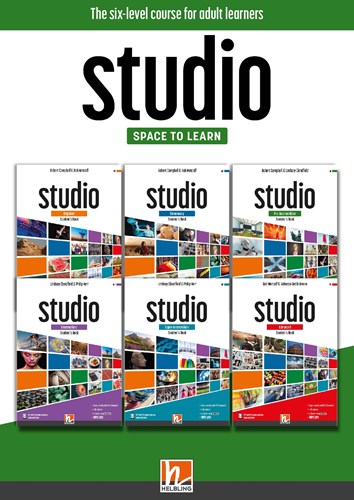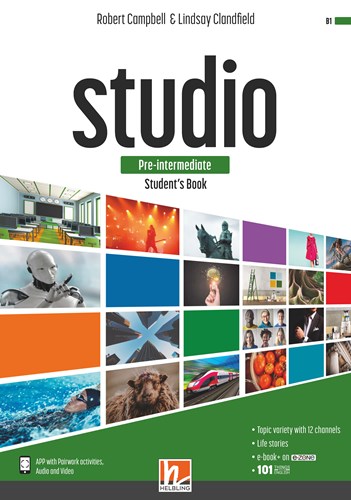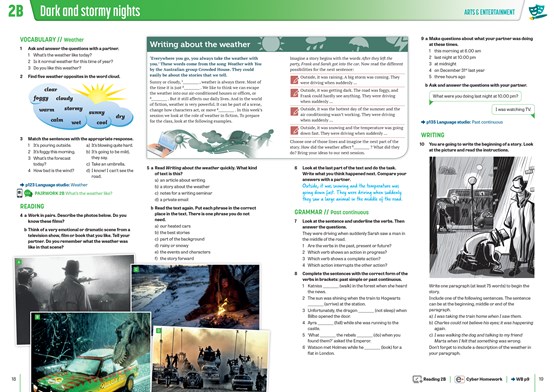The classroom as rehearsal space
Imagine introducing a language point in class, or getting learners to read a dialogue in pairs or even a part of a lesson where you are working on word stress with your class… these are all familiar scenarios that can happen face to face or live online. And, in each one, you and/or learners are, in a sense, performers, using storytelling, role-play and voice exercises, with the classroom acting as your rehearsal space.
A sponsored advertorial by Helbling Languages.
Imagine the following situations in an English language class:
- The teacher is introducing a new language point. She stands in front of the class and tells a funny story with examples of the language, which she supports with visuals. The learners are all sitting and listening attentively. They are even laughing at times.
- Two learners are reading a dialogue together in pairs. They do this a couple of times, then the teacher calls on them to present the conversation to the class, possibly without referring to the printed version. The pair role-play the scene, and people in the class are impressed. Some even applaud.
- The teacher is working on word stress with the learners. He is calling out words, and learners are repeating them in unison. The teacher calls on individual learners to repeat the words as well. When they get them right, the teacher praises them.
None of these situations is particularly uncommon. They are all quite standard examples of what happens in the face-to-face classroom, and even online in the virtual live classroom. In each case, the teacher and/or learners are, in a sense, performers, using storytelling, role-play and voice exercises.

In many ways, a classroom is a rehearsal studio, a creative space where learners prepare for producing language outside the classroom in the ‘real world’. The process is similar to how actors and musicians rehearse to improve their craft and performance.
We often talk about how much teaching involves acting. The teacher also has to take on the role of director; preparing classes, organizing the students, deciding what happens when and how. We also ask our learners to be actors as they practice the language they need.
The classroom is like a rehearsal studio in other ways too. The main focus is on what is happening between the people in the room. In most cases, the teacher stands at the front of the class on what may literally be a stage or raised space. Some classes have chairs arranged in a circle or u-shape, allowing students more opportunities to interact – a theatre-in-the-round.
Both of us believe a studio is a creative place where both study and play are used to help participants develop their skills. This was the starting point for our latest English Language Teaching (ELT) project, a six-level English course for young adult learners called Studio.

So, how do we encourage both study and play in Studio? We’ve always been great fans of pairwork, so we’ve incorporated pairwork activities into every unit of the course. Some of the activities can be completed using an app that allows students to use their phones or other digital devices to communicate with each other in a fun and innovative way.
We also wanted the course to use audio and video in a fresh way to appeal to today’s learners and support their learning. Apart from using a wide range of audio genres, each unit includes a ‘Life Story’ in which people talk about events from their lives. These are presented alternately using video or audio. Watching and listening to these stories helps bring them to life, making them more meaningful and easier to understand.
We use video in a unique way in our functional language lessons too. Apart from being able to watch everyday scenes and see how useful phrases are said in context, students can literally put themselves in the picture by creating their own scenes, using the same ‘videoscape’ backgrounds as the actors in the videos.
There is so much variety in today’s digital world and we’ve reflected that in the course by linking each lesson to a different theme or channel. There are 12 Studio channels. They include Arts & Entertainment, Business, History, People, Sports and Travel. Linking the material to a different channel in each lesson heightens students’ interest and motivation.
Finally, we’ve given vocabulary practice a new twist. Students can download and listen to words from the vocabulary wordlists in the Workbook. These ‘Vocabulary Beats’ take individual words and build them into phrases. They are set to music, allowing students to listen and repeat in time to the music as they walk, jog, travel to work or relax.


Apart from our work as coursebook authors, over the years we have also been involved in many other related areas – writing and producing ELT video material, creating educational websites and apps for teachers and students, writing and editing magazines, as well as years of classroom teaching and training. In Studio, we wanted to find a way to bring all those different strands together to create a new course that both teachers and students will find rewarding, never losing sight of our initial concept of the classroom as a rehearsal space.
The content for this page was paid for and provided by Helbling Languages.
Comments
Write a Comment
Comment Submitted